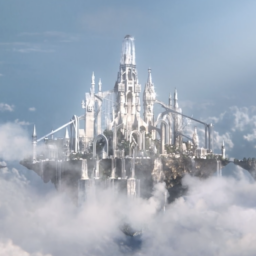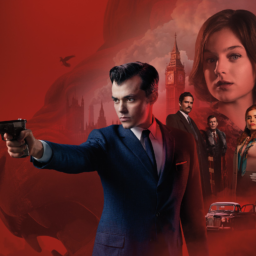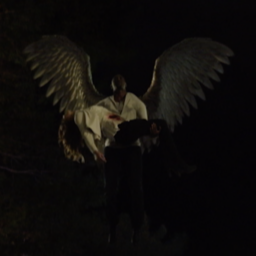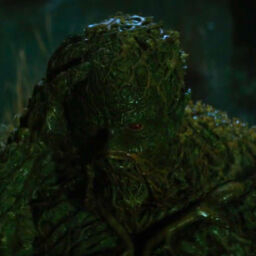NORTH HOLLYWOOD, CA: OCTOBER 30, 2019 — Just in time for Halloween, The CW airs a new episode of Nancy Drew tonight (October 30) titled “The Haunted Ring,” and as the funeral for Tiffany Hudson nears, her confused spirit seemingly haunts Horseshoe Bay. As Nancy Drew gets spookier and spookier, it means more work for the hard-working team of the Vancouver office of CoSA Visual Effects.
We spoke with some of the members of the team – Associate VFX Supervisor Brian Fisher, Compositing Supervisor Nikolai Michaleski, and VFX Producer Brigitte Stanovick, about what it’s like to play in the mysterious world of books’ most famous young sleuth in her show that airs Wednesdays on The CW television network.
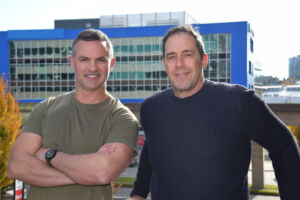 Can you introduce yourselves and what you do for Nancy Drew?
Can you introduce yourselves and what you do for Nancy Drew?
BRIAN FISHER: I’m Brian Fisher, and I am the one of the VFX Supervisors on the show. I split my time on set and also overseeing shots in house.
NIKOLAI MICHALESKI: My name is Nikolai Michaleski and I’m the Comp Supervisor for Nancy Drew. My roles include helping with the creative overall look of the effects for the show, and trying to make the visual effects supervisor’s role much easier, and working with my team of compers to do the best job that we can for the show.
BRIGITTE STANOVICK: I’m Brigitte Stanovick, and I’m the Visual Effects Producer on Nancy Drew. I’m the head liaison between the clients and the internal teams, and I play the part of requesting info, putting all the puzzles together, and helping the team just get all the shots done.
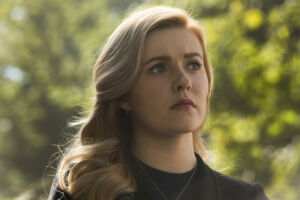 Can you talk about some of the kinds of visual effects you get to do for Nancy Drew?
Can you talk about some of the kinds of visual effects you get to do for Nancy Drew?
BS: Outside of the supernatural kind of visual effects, we do a lot of the typical cleanup – beauty cleanup or production issues where we have to like roto or remove something from the background, or add something that maybe wasn’t there, to give the better illusion of that current space in the reality, and then, of course, we do a lot more of the supernatural realms.Brian, how often do you work on set for Nancy Drew?
BF: It’s dependent on the VFX needs for each episode. An episode that has minimal FX, I may only be needed 1 or 2 days, while heavier episodes call for me to be there every day. The scope of VFX work has gotten larger as the season has progressed, so lately, I’ve been on set more than in the office.
When you are building a sequence with a person or a creature that may not already be in the shot, do you get blank plates for some of the backgrounds there?
NM: Ideally, we do. Sometimes we don’t, and then we have to get a little bit more creative in terms of trying to rebuild a plate that isn’t there.
BS: It’s about just working with the team and the client to come up with a creative way to execute their idea, given whatever limitations they have, if it’s not having the plates, or if its timing, or if its cost, it’s about deciding on the best way to execute it all.
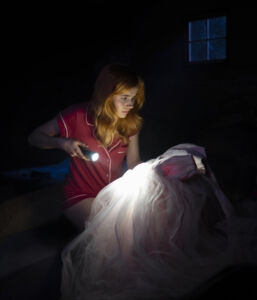 What is the biggest challenge of working on a show like Nancy Drew?
What is the biggest challenge of working on a show like Nancy Drew?
NM: Time.
BS: When this project came up, production didn’t really think that it was going to be such a big show visual effects wise. They thought it was going to be more simple stuff, 2D, so the schedule they built was kind of based on those parameters, and then they noticed that Nancy Drew had so much more supernatural stuff that needed to come out, and to do that we had to create those effects for it. And so, Nikolai’s right. The challenge is turning around these bigger CG shots or even bigger 2D shots in the limited amount of time that they’ve given us, because their schedule hasn’t changed.
BF: By far the biggest challenge has been the aggressive post schedule. We have about a week to turn around an episode. Just about every episode has had CG elements and dynamic FX such as fire and supernatural smoke, a lot of which takes time to develop the look for. A week is not a lot of time to turn those kind of shots around.
Is it daunting when you get news that there will be more episodes in a season, or is that a good challenge?
BS: I mean, it’s a good challenge because that means I still have a job.
I think having eight more episodes is great, because what we’re really learning from this is how to work with such intimate, internal, tight teams on a global setting. I’m new at CoSA, so to bring my experience and also work within the process and protocol that CoSA has, it’s been fun and challenging because you kind of like have to learn people’s personalities and work behaviors and try to be that chameleon of how to act and react to situations, and it just builds a better team.
As I’m sure Nikolai can agree as episodes have gone on, we’ve done things faster, quicker, and kind of just been more on top of it because we kind of get to know each other professionally in how we deal with these issues or occurrences. It’s been getting a lot more efficient through the episodes, so by the time we get Episode 18, 20, 22, our team is just going to work so seamlessly that it’s going to be it’s going to be really great to get to that milestone.
BF: It just means you need to keep up the pace for that much longer. As I mentioned, it’s a short delivery schedule. Being on set, and also overseeing shots in house, can make for long days, but I’m looking forward to being a part of this production for a full season!
NM: With each episode, we learn a little more how to turn this thing around and in a very short time with the relatively large amount of work we have to do.
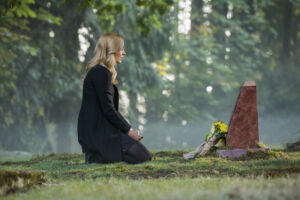 Speaking of efficiency, is it beneficial that CoSA has a Vancouver office for a show that films in Vancouver?
Speaking of efficiency, is it beneficial that CoSA has a Vancouver office for a show that films in Vancouver?
BS: It’s great that it’s being shot there and we have an office there, because it gives Brian the opportunity to go on set and help deal with issues that we may not know until we get the footage, and then we’re kind of like trying to troubleshoot when it’s too late. So it’s great that we have an office located near the production, that’s also on the West Coast, that we can share the same time zone with.
I think that’s beneficial, and obviously so much work gets done in Canada that it’s nice that we get to have a vibrant office there that gets to employ a lot of great people and, gets to work with the current production.
NM: It helps that we have visual effects supervisor to be both here in office and on set at the same time, so that’s a bonus.
BF: With the studio and shoot happening in the same city, it allows me to quickly get from the office to set, and vice versa. It’s so efficient to be able to be in morning dailies, and go directly to the production office and discuss shots.
Can you talk about the team that you are working with up in Vancouver?
BF: We have a very talented group of artists. This is my third season with CoSA Vancouver, and for the most part, the core group have been here longer then me. When you work with a team that’s been together for that long, a synergy develops, making it a lot easier to get shots delivered. Some of our production and supervision is done remotely from our L.A. office, which can be challenging at times, but we communicate well and overcome those challenges.
Do you have a favorite sequence that you had worked on for the series so far?
BF: In episode 4, there’s a scene where Leah Lewis’ character, “George”, is walking in a dark parking lot, and this “spirit,” in the form of a smoke tendril, attacks her. Both FX and Comp did a great job in turning these shots around.
NM: My favorite bit [so far] would have to be the mist/smoke dynamics shots as they involved the most creative input. The element essentially becomes another character that acts in the scene and requires direction like any other, except in this case we get to play director.
BS: My favorite sequences are coming up [in episodes 7 and 8]. Those are going to be so big.
Is it true that the series ramps up the VFX as it goes on in the season?
BF: Yeah. The pilot had very little FX shots. Mostly invisible shots, like computer monitor burn ins, and a few shots where we had to add a blood stain to a dress. Each episode has gotten substantially heavier with VFX. There’s some cool stuff happening in episodes 7, 8 and 9, but I can’t talk about that yet.
What is the most rewarding part of working on the Nancy Drew series?
NM: For me, it is a massive learning experience. That would be that would be my favorite thing about it. I know I’m enjoying it in a lot of ways, because it’s exciting and challenging.
BF: I read the books as a kid, so the nostalgia of helping bring to life, on screen, a classic like Nancy Drew is a lot of fun.
ABOUT CoSA VFX
Founded in 2009, CoSA VFX has grown from a small boutique into a thriving visual effects studio with offices in Los Angeles, Atlanta, and Vancouver. The CoSA VFX team has received Emmy nominations and wins for their work on TV series including Marvel’s Agents of S.H.I.E.L.D., Almost Human, Revolution, and Gotham, and currently provides visual effects for multiple studios, networks and streaming television services.
FOLLOW CoSA VFX
http://cosavfx.com
http://facebook.com/cosavfx
http://twitter.com/cosavfx
https://www.linkedin.com/company/cosa-vfx/
MEDIA CONTACT
Craig Byrne
Publicist/Social Media Manager
Craig.Byrne-IC@cosavfx.com



